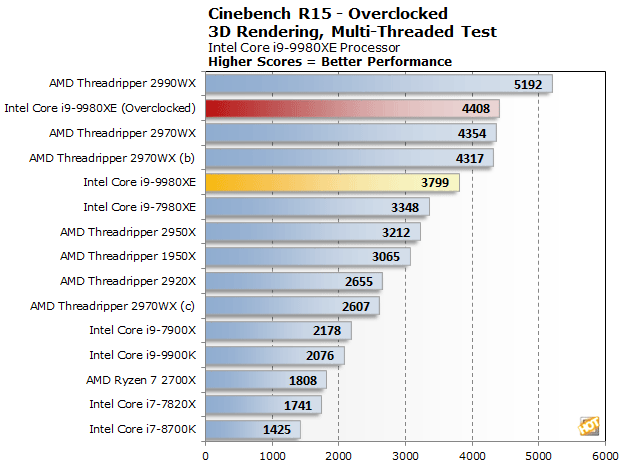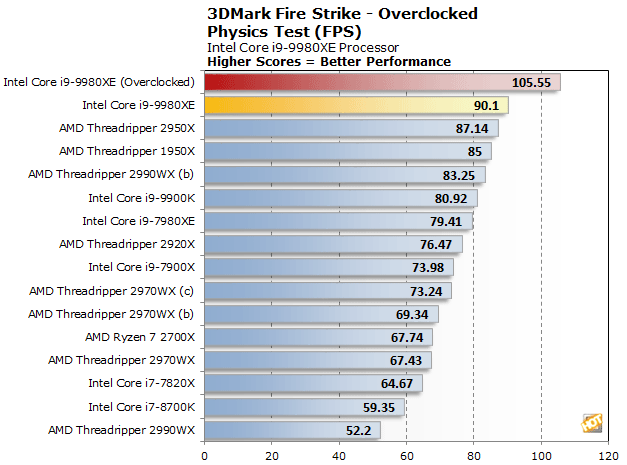Intel Core i9-9980XE CPU Review: Supercharged, Many-Core Skylake-X
|
With chips as large and complex as the Intel Core i9-9980XE, power and cooling considerations are very important when overclocking. In its stock configuration, this processor is rated for 165W, but power consumption and heat output can shoot up considerably when the chip is pushed beyond spec. As such, Intel has incorporated options to increase voltages and specify peak current thresholds. These threshold options and power/heat considerations add some wrinkles and complexity to the overclocking process if you're looking to squeeze every last MHz out of a Skylake-X chip, but we still found overclocking the 9980XE to be relatively straightforward and fruitful, even with a mainstream, tower-type air cooler. We didn't use any exotic cooling equipment here either.

With proper cooling and a moderate voltage bump in the 1.175V - 1.2V range, we suspect many Core i9-9980XE processors will be able to hit 4.3 - 4.4GHz on all cores with quality air or liquid cooling. With more powerful cooling and some additional voltage though, we suspect higher clocks will be possible, based on our experience.
Although the options are there to disable SpeedStep and various C states, overclocking Skylake-X is really as easy as finding the right combo of voltage, BCLK, and peak Turbo frequencies. By altering those options and leaving SpeedStep, etc. enabled, the processor can still clock-down when not under load, minimizing total power consumption and heat output when the CPU isn’t being fully utilized.

We were able to take our particular Core i9-9980XE up to a 4.5GHz all-core boost frequency using only 1.175V and a peak, all-core turbo multiplier of 45. At that speed, however, we were pushing the limits of our test platform, as temperatures would spike above 90ºC with long, sustained workloads and result in some throttling and lower than expected performance. With bursty workloads, however, things hummed along nicely. We should also mention, that higher clocks were possible, but temperatures shot up too quickly with our thermal solution and caused the chip to throttle.


|
Before wrapping things up, we'd also like to talk a bit about power consumption. Throughout all of our benchmarking and testing, we monitored how much power our test systems were consuming with a power meter to compare and contrast the results. Our goal was to give you an idea as to how much power each configuration used while idling at the Windows desktop and while under a heavy CPU workload. Keep in mind, this is total system power consumption being measured at the outlet with only the processor loaded and not the the individual power of the CPUs alone.

Although Intel is using an updated manufacturing process and selectively binning 9th Gen Core X series processors, they're still being built at 14nm, and with their higher frequencies, we were expected increased power consumption. Turns out idle power with the Core i9-9980XE is very similar to the Core i7-7980XE, but load power was a full 68 watts higher. Load power wasn't quite high enough to match the Threadripper 2970WX, but it's not too far behind either.








